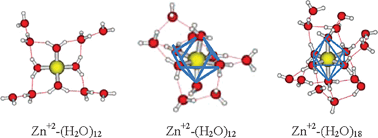Micro-solvation of the Zn2+ ion—a case study
Abstract
The structures and thermodynamic parameters of hydrated

* Corresponding authors
a
Chemical Engineering Division, Bhabha Atomic Research Centre, Mumbai 400 085, India
E-mail:
musharaf@barc.gov.in
b
Department of Chemical Engineering, Institute of Chemical Technology, University of Mumbai, Matunga, Mumbai 400 019, India
E-mail:
v.g.gaikar@udct.org
The structures and thermodynamic parameters of hydrated

 Please wait while we load your content...
Something went wrong. Try again?
Please wait while we load your content...
Something went wrong. Try again?
S. De, Sk. M. Ali, A. Ali and V. G. Gaikar, Phys. Chem. Chem. Phys., 2009, 11, 8285 DOI: 10.1039/B902422K
To request permission to reproduce material from this article, please go to the Copyright Clearance Center request page.
If you are an author contributing to an RSC publication, you do not need to request permission provided correct acknowledgement is given.
If you are the author of this article, you do not need to request permission to reproduce figures and diagrams provided correct acknowledgement is given. If you want to reproduce the whole article in a third-party publication (excluding your thesis/dissertation for which permission is not required) please go to the Copyright Clearance Center request page.
Read more about how to correctly acknowledge RSC content.
 Fetching data from CrossRef.
Fetching data from CrossRef.
This may take some time to load.
Loading related content
